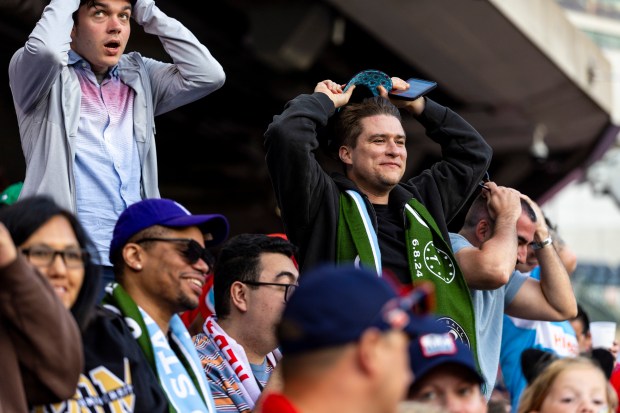For many, this is back to school time and it reminds me of a story a friend told about the long-ago day he moved into his dorm room at a downstate university.
It took him a while to put clothes in drawers and books on shelves and finally, his roommate arrived. The two had never met but shook hands and made some small talk until the roommate noticed the many books filling most of the shelves. He asked, “You gotta read all these books for classes or something?”
“No, I’ve already read them,” said my friend.
The roommate asked, “What you still got ‘em for then?”
A good question, as I now look at my own bookshelves, lined with books that I have read: What I still got ‘em for then?
I suppose because they represent touchstones, their titles able to almost instantly evoke pieces of our own past. But we can also uncover new things about the book and, perhaps, also new things about ourselves. Every winter, I’ll reread Jack London’s “The Call of the Wild” because it gives me some immunity to winter’s cold and snow. (Don’t have time for that novel? Try his powerful short story, “To Build a Fire.”)
Too hot for Jack London yet, I looked over my bookshelves and I pulled out my copy of Tom Wolfe’s “The Electric Kool-Aid Acid Test” and began to read, “That’s good thinking there, Cool Breeze. Cool Breeze is a kid with three or four days’ beard sitting next to me on the stamped metal bottom of the open back part of a pickup truck. Bouncing along.”
This was a book I first read shortly after it was published in 1968. It was the basis for what my high school called a “senior project,” a 20-page essay. I do not remember what grade I got for this chore but it hooked me on Wolfe. I immediately read his previous book, 1965’s collection of stories titled, “The Kandy-Kolored Tangerine-Flake Streamline Baby,” and then all those that came after. Of them, 1979’s “The Right Stuff,” about the first group of astronauts, is among my all-time favorites, while his latter, massive novels left me cold.
And so, I will tell you that “Acid Test” holds up, a wild ride with a bunch of folks who traveled across the country in a 1939 International Harvester school bus they called “Further,” which served as home, playground and makeshift movie studio. They called themselves the Merry Pranksters, appealing lunatics and mavericks organized by novelist Ken Kesey, who wrote “One Flew Over the Cuckoo’s Nest” and was a man of limitless energy and persuasive vision.
With Wolfe’s deep reporting and sizzling style, he captures these free spirits in all their hedonistic, self-indulgent and proselytizing energy. On their 1964 ride, they preached the benefits of LSD (and a number of other recreations), partied with the Hells Angels, visited Timothy Leary, tried to turn on entire cities and generally behaved with structured abandon.
Wolfe was along for most of the ride and gives us all the characters, none more compelling than Neal Cassady, a major figure in two of the most important books of the era. He was “Dean Moriarty” in Jack Kerouac’s 1957 “On the Road” and in “Acid Test” he is among the Pranksters and the main driver of the bus.
Rereading, I was reminded of many things, among them the 1997 time a bus drove into Chicago. It wasn’t the bus but rather a facsimile of the original. It came here after some San Francisco events, stopping for a couple of hours at a local bookstore and then off to Ann Arbor, Michigan, and Columbus, Ohio, before arriving in Cleveland, where it was for a time part of an exhibit called “I Want to Take You Higher: The Psychedelic Era 1965-1969,” at the Rock & Roll Hall of Fame.
So, I finished the reread and went to a nearby bookstore and there found a new edition, colorful cover, fresh pages and an introduction by British writer Geoff Dyer. He’s a fan and a thoughtful critic. He writes of the book’s “lasting value.” This was “not Wolfe’s first book but it was his first opportunity to road test his abilities and approach over the extended length of a book.” He adds: “I suppose you had, as they used to say, to be there. Nothing if not readable, Wolfe makes us feel like we were, like we are.”
I bought that copy and it now sits next to the old copy.
And I think about Kesey, who died in 2001 and Wolfe, who died in 2018. Most of the others in the book are gone too. Cassady died the saddest death of them all. He moved to Mexico and after attending a wedding, went walking along some railroad tracks in a cold rain. Wearing only a T-shirt and jeans, he passed out and was found in a coma. He died hours later on Feb. 4, 1968. He was 41.
But in the book he (all of them) remain wildly, colorfully, unforgettably alive. As Wolfe wrote, “There are two Cassadys. One minute Cassady looks 58 and crazy — speed! — and the next, 28 and peaceful — acid.”
rkogan@chicagotribune.com





